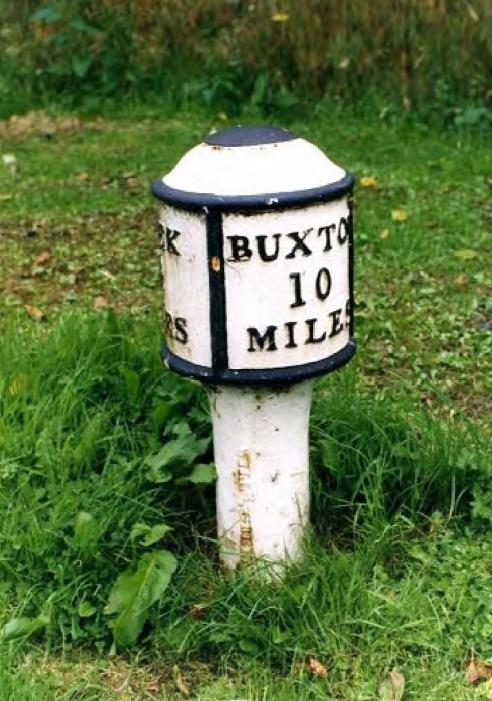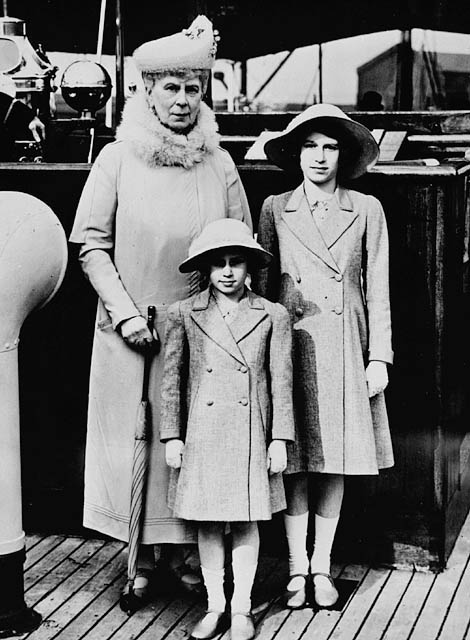|
Tittesworth
Tittesworth is a civil parish in the Staffordshire Moorlands, in Staffordshire, England. It extends from the edge of the town of Leek in the south-west to Blackshaw Moor in the north-east. In the east is the village of Thorncliffe. To the west is the civil parish of Leekfrith, where the boundary is the River Churnet.To the east is the civil parish of Onecote. Tittesworth Brook runs westwards through the area from Thorncliffe, and flows into the Churnet. The name Tittesworth is Old English: a personal name thought to be Tet, and the word for an enclosed settlement. The reservoir Tittesworth Reservoir lies partly in Tittesworth and partly in Leekfrith. It was created in 1858 by the Staffordshire Potteries Water Works Co., by damming the River Churnet. The area was originally . Work to increase the area to was begun in 1959; the extended reservoir was inaugurated by Princess Margaret, Countess of Snowdon in 1962. [...More Info...] [...Related Items...] OR: [Wikipedia] [Google] [Baidu] |
Tittesworth Dam - Geograph
Tittesworth is a civil parish in the Staffordshire Moorlands, in Staffordshire, England. It extends from the edge of the town of Leek in the south-west to Blackshaw Moor in the north-east. In the east is the village of Thorncliffe. To the west is the civil parish of Leekfrith, where the boundary is the River Churnet.To the east is the civil parish of Onecote. Tittesworth Brook runs westwards through the area from Thorncliffe, and flows into the Churnet. The name Tittesworth is Old English: a personal name thought to be Tet, and the word for an enclosed settlement. The reservoir Tittesworth Reservoir lies partly in Tittesworth and partly in Leekfrith. It was created in 1858 by the Staffordshire Potteries Water Works Co., by damming the River Churnet. The area was originally . Work to increase the area to was begun in 1959; the extended reservoir was inaugurated by Princess Margaret, Countess of Snowdon in 1962. [...More Info...] [...Related Items...] OR: [Wikipedia] [Google] [Baidu] |
Listed Buildings In Tittesworth
Tittesworth is a civil parish in the district of Staffordshire Moorlands, Staffordshire, England. It contains six listed buildings that are recorded in the National Heritage List for England The National Heritage List for England (NHLE) is England's official database of protected heritage assets. It includes details of all English listed buildings, scheduled monuments, register of historic parks and gardens, protected shipwrecks, an .... All the listed buildings are designated at Grade II, the lowest of the three grades, which is applied to "buildings of national importance and special interest". The parish contains the village of Thorncliffe and is otherwise rural. The listed buildings consist of farmhouses and farm buildings, a spring head cover, and a milepost. __NOTOC__ Buildings References Citations Sources * * * * * * * {{DEFAULTSORT:Tittesworth Lists of listed buildings in Staffordshire ... [...More Info...] [...Related Items...] OR: [Wikipedia] [Google] [Baidu] |
River Churnet
The River Churnet is a river in Staffordshire, England. It is a tributary of the River Dove. Etymology The origins of the name "Churnet" are unknown, though it is thought to derive from the pre-English, British name for the river. Course The source of the river is located over above sea level in the Staffordshire moorlands, near the gritstone escarpment of the Roaches, and next to the A53 Leek to Buxton road, It is only a few hundred yards away from Black Brook which ultimately, through the Dane and Weaver, flows into the Irish Sea; however, the Churnet, through the Dove, Trent and Humber Estuary, ultimately flows into the North Sea. After flowing downhill for a few miles it reaches Tittesworth Reservoir, a major supplier of fresh water to the Potteries and Leek. After it leaves the dam at Tittesworth, it flows into the ancient market town of Leek, where it was used until quite recently to aid the manufacture of dyes that were used in the town's textile and silk ind ... [...More Info...] [...Related Items...] OR: [Wikipedia] [Google] [Baidu] |
Ball Haye Green
Ball Haye Green is an area of Leek in Staffordshire, England. The area was historically an estate in the township A township is a kind of human settlement or administrative subdivision, with its meaning varying in different countries. Although the term is occasionally associated with an urban area, that tends to be an exception to the rule. In Australia, C ... of Tittesworth. It was developed as a suburb of Leek from the 1820s, when the Leek Building Society erected 42 houses between 1824 and 1829. The suburb was extended in the 20th century by the building of housing estates. References Leek, Staffordshire {{Staffordshire-geo-stub ... [...More Info...] [...Related Items...] OR: [Wikipedia] [Google] [Baidu] |
Staffordshire Moorlands
Staffordshire Moorlands is a Non-metropolitan district, local government district in Staffordshire, England. Its council, Staffordshire Moorlands District Council, is based in Leek, Staffordshire, Leek and is located between the city of Stoke-on-Trent and the Peak District National Park. The 2001 census recorded the population as 94,489. Principal industries are agriculture, fashion and tourism. The area's three towns are Leek, Cheadle, Staffordshire, Cheadle and Biddulph. Visitor attractions include the National Trust for Places of Historic Interest or Natural Beauty, National Trust property Biddulph Grange, the Churnet Valley Railway, the UK's largest theme park Alton Towers Resort, and the annual Leek Arts Festival. There are also a variety of outdoor pursuits such as rock climbing (The Roaches), sailing (Rudyard Lake) and cycling (Waterhouses, Staffordshire, Waterhouses). Governance The district was formed on 1 April 1974, under the Local Government Act 1972, as a merger of ... [...More Info...] [...Related Items...] OR: [Wikipedia] [Google] [Baidu] |
Leekfrith
Abbey Green Leekfrith is a civil parish in the Staffordshire Moorlands, in Staffordshire, England, north of the town of Leek. The population of the civil parish at the 2011 census was 363. It is an area between the River Churnet which is near Leek, and the River Dane (the boundary with Cheshire) and its tributary Black Brook. The civil parishes of Heaton and Tittesworth are to the west and east. The civil parish includes the village of Meerbrook, the Roaches (a rocky ridge in the north-east) and most of Tittesworth Reservoir. A chasm known as Lud's Church is near the River Dane. A hill named Gun is at the western boundary, and the village of Upper Hulme is near the eastern boundary. The ground is of boulder clay, and the underlying rock is millstone grit. The soil is loam and clay. The land is used mostly as pasture. History The word ''frith'' means a wood; much of the area was wooded countryside in medieval times, and some survives north-east of Abbey Green. Leekfrith wa ... [...More Info...] [...Related Items...] OR: [Wikipedia] [Google] [Baidu] |
Severn Trent Water
Severn Trent plc is a water company based in Coventry, England. It supplies 4.6 million households and business across the Midlands and Wales. It is traded on the London Stock Exchange and a constituent of the FTSE 100 Index. Severn Trent, the trading name owned by the company, applies to a group of companies operating across the United Kingdom, United States and mainland Europe, with some involvement in the Middle East. It took its name from the two predecessor River Authorities, which managed the catchment of the Severn and the Trent. History The Severn Trent Water Authority was established in 1974. In July 1989, the Severn Trent Water Authority was partially privatised under the Water Act 1989, together with the rest of the water supply and sewage disposal industry in England and Wales, to form Severn Trent Water, with a responsibility to supply freshwater and treat sewage for around 8 million people living in the Midlands of England and also a small area of Wales. ... [...More Info...] [...Related Items...] OR: [Wikipedia] [Google] [Baidu] |
Onecote
Onecote is a village and civil parish on the B5053 road, near Leek, in the Staffordshire Moorlands district, in the county of Staffordshire, England. The population as taken at the 2011 census was 220. Onecote has a parish church dedicated to St Luke. The Peak District Boundary Walk runs through the village. See also *Listed buildings in Onecote Onecote is a civil parish in the district of Staffordshire Moorlands, Staffordshire, England. It contains twelve listed buildings that are recorded in the National Heritage List for England The National Heritage List for England (NHLE) is Engl ... References External links Genuki* http://www.peakdistrictinformation.com/towns/onecote.php British-history* http://www.wishful-thinking.org.uk/genuki/STS/Onecote/MIs.html Listed buildings in Onecote Staffordshire Moorlands Towns and villages of the Peak District Villages in Staffordshire Civil parishes in Staffordshire {{Staffordshire-geo-stub ... [...More Info...] [...Related Items...] OR: [Wikipedia] [Google] [Baidu] |
The Visitor Centre At Tittesworth Reservoir - Geograph
''The'' () is a grammatical article in English, denoting persons or things that are already or about to be mentioned, under discussion, implied or otherwise presumed familiar to listeners, readers, or speakers. It is the definite article in English. ''The'' is the most frequently used word in the English language; studies and analyses of texts have found it to account for seven percent of all printed English-language words. It is derived from gendered articles in Old English which combined in Middle English and now has a single form used with nouns of any gender. The word can be used with both singular and plural nouns, and with a noun that starts with any letter. This is different from many other languages, which have different forms of the definite article for different genders or numbers. Pronunciation In most dialects, "the" is pronounced as (with the voiced dental fricative followed by a schwa) when followed by a consonant sound, and as (homophone of the archaic pron ... [...More Info...] [...Related Items...] OR: [Wikipedia] [Google] [Baidu] |
Leek, Staffordshire
Leek is a market town and civil parishes in England, civil parish in the county of Staffordshire, England, on the River Churnet. It is situated about north east of Stoke-on-Trent. It is an ancient borough and was granted its royal charter in 1214. It is the administrative centre for the Staffordshire Moorlands District Council. John of England, King John granted Ranulph de Blondeville, 6th Earl of Chester, the right to hold a weekly Wednesday market and an annual seven-day fair in Leek in 1207. Leek's coat of arms is made up of a saltire shield. On the top is the Stafford knot, either side is the Leek double sunset and below a gold garb. The crest is a mural crown with three mulberry leaves on a mount of heather on top of which a Red grouse, moorcock is resting his claw on a small-weave shuttle. The motto translates to: Our skill assisting us, we have no cause for despair. Economy The town had a regular cattle market for hundreds of years, reflecting its role as a centre of ... [...More Info...] [...Related Items...] OR: [Wikipedia] [Google] [Baidu] |
Princess Margaret, Countess Of Snowdon
Princess Margaret, Countess of Snowdon, (Margaret Rose; 21 August 1930 – 9 February 2002) was the younger daughter of King George VI and Queen Elizabeth The Queen Mother, and the younger sister and only sibling of Queen Elizabeth II. Margaret was born when her parents were the Duke and Duchess of York, and she spent much of her childhood with them and her elder sister. Her life changed at the age of six, when her father ascended the British throne following the abdication of his brother Edward VIII. Margaret's sister became heir presumptive, with Margaret second in line to the throne. Her position in the line of succession diminished over the following decades as Elizabeth's children and grandchildren were born. During the Second World War, the two sisters stayed at Windsor Castle despite suggestions to evacuate them to Canada. During the war years, Margaret was too young to perform official duties and continued her education, being nine years old when the war ... [...More Info...] [...Related Items...] OR: [Wikipedia] [Google] [Baidu] |






.png)

